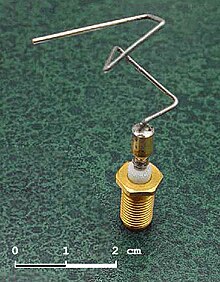Genetic algorithm
[1] Genetic algorithms are commonly used to generate high-quality solutions to optimization and search problems via biologically inspired operators such as selection, crossover, and mutation.Commonly, the algorithm terminates when either a maximum number of generations has been produced, or a satisfactory fitness level has been reached for the population.The main property that makes these genetic representations convenient is that their parts are easily aligned due to their fixed size, which facilitates simple crossover operations.Once the genetic representation and the fitness function are defined, a GA proceeds to initialize a population of solutions and then to improve it through repetitive application of the mutation, crossover, inversion and selection operators.An adequate population size ensures sufficient genetic diversity for the problem at hand, but can lead to a waste of computational resources if set to a value larger than required.In particular, it is difficult to understand why these algorithms frequently succeed at generating solutions of high fitness when applied to practical problems.[12][13] Although good results have been reported for some classes of problems, skepticism concerning the generality and/or practicality of the building-block hypothesis as an explanation for GAs' efficiency still remains.The notion of real-valued genetic algorithms has been offered but is really a misnomer because it does not really represent the building block theory that was proposed by John Henry Holland in the 1970s.This has been found to help prevent premature convergence at so-called Hamming walls, in which too many simultaneous mutations (or crossover events) must occur in order to change the chromosome to a better solution.This was explained as the set of real values in a finite population of chromosomes as forming a virtual alphabet (when selection and recombination are dominant) with a much lower cardinality than would be expected from a floating point representation.This particular form of encoding requires a specialized crossover mechanism that recombines the chromosome by section, and it is a useful tool for the modelling and simulation of complex adaptive systems, especially evolution processes.A practical variant of the general process of constructing a new population is to allow the best organism(s) from the current generation to carry over to the next, unaltered.The probabilities of crossover (pc) and mutation (pm) greatly determine the degree of solution accuracy and the convergence speed that genetic algorithms can obtain.Stick to simulated annealing for your heuristic search voodoo needs.In 1950, Alan Turing proposed a "learning machine" which would parallel the principles of evolution.Starting in 1957,[43] the Australian quantitative geneticist Alex Fraser published a series of papers on simulation of artificial selection of organisms with multiple loci controlling a measurable trait.From these beginnings, computer simulation of evolution by biologists became more common in the early 1960s, and the methods were described in books by Fraser and Burnell (1970)[44] and Crosby (1973).In addition, Hans-Joachim Bremermann published a series of papers in the 1960s that also adopted a population of solution to optimization problems, undergoing recombination, mutation, and selection.Genetic algorithms in particular became popular through the work of John Holland in the early 1970s, and particularly his book Adaptation in Natural and Artificial Systems (1975).Research in GAs remained largely theoretical until the mid-1980s, when The First International Conference on Genetic Algorithms was held in Pittsburgh, Pennsylvania.In the late 1980s, General Electric started selling the world's first genetic algorithm product, a mainframe-based toolkit designed for industrial processes.The New York Times technology writer John Markoff wrote[54] about Evolver in 1990, and it remained the only interactive commercial genetic algorithm until 1995.

Evolutionary algorithmChromosomeFitness functionGenetic operatorCrossoverMutationSelectionPopulation modelClonal selection algorithmFly algorithmGenetic fuzzy systemsGenetic memorySchemaPromoter based GAGenetic programmingCartesian GPLinear GPGene expression programmingGrammatical evolutionMulti expression programmingDifferential evolutionEvolution strategyEvolutionary programmingCellular EACultural algorithmEffective fitnessEvolutionary computationGaussian adaptationEvolutionary multimodal optimizationMemetic algorithmNeuroevolutionevolved antennacomputer scienceoperations researchmetaheuristicnatural selectionevolutionary algorithmsoptimizationsearch problemsdecision treessudoku puzzleshyperparameter optimizationcausal inferencepopulationcandidate solutionsphenotypeschromosomesgenotypeiterative processfitnessobjective functionstochasticallyrecombinedalgorithmgenetic representationarray of bitssearch spaceSelection (genetic algorithm)selectedfitterknapsack problemsimulationphenotypecomputational fluid dynamicsinteractive genetic algorithmsCrossover (genetic algorithm)Mutation (genetic algorithm)genetic operatorsgenetic driftergodicheuristicsschemataestimation of distribution algorithmsapproximated fitnessapproximate modelslocal optimaglobal optimumfitness landscapeNo Free Lunch theoremevolution strategiesdecision problemssimulated annealinghill climbingswarm intelligenceant colony optimizationparticle swarm optimizationinteger linear programmingbit stringintegersfloating pointJohn Henry Hollandlinked listhashesobjectsdata structureGray codingParallelonline optimizationsimple hill climbinginversion operatortimetabling and scheduling problemsengineeringglobal optimizationergodicityMarkov chainSkienaAlan TuringNils Aall BarricelliInstitute for Advanced StudyPrinceton, New JerseyAlex Fraserartificial selectionHans-Joachim Bremermannartificial evolutionIngo RechenbergHans-Paul SchwefelLawrence J. FogelJohn Hollandcellular automataHollandUniversity of MichiganHolland's Schema TheoremPittsburgh, PennsylvaniaEvolverThe New York TimesJohn Markoff